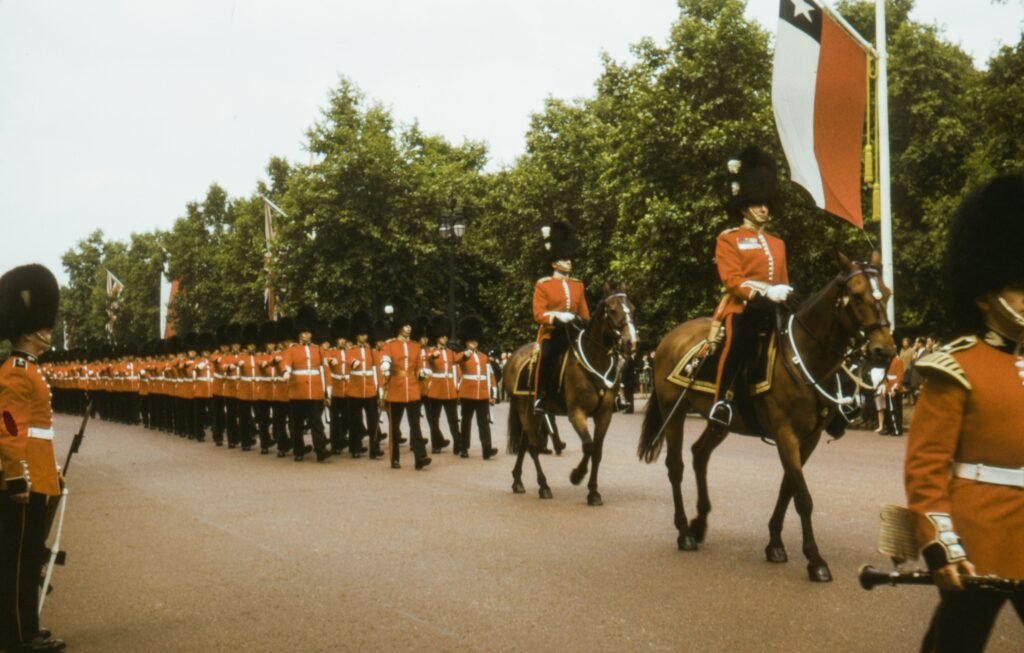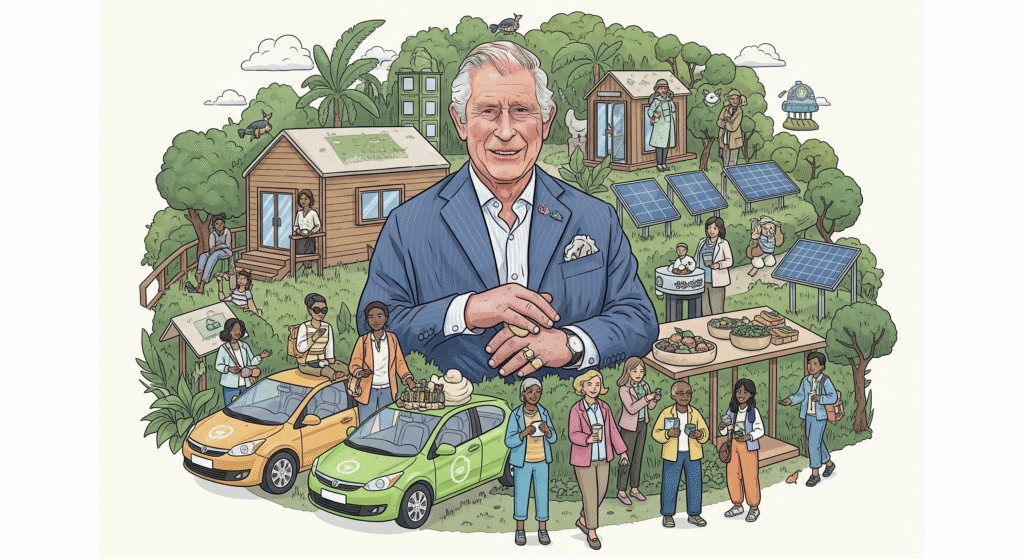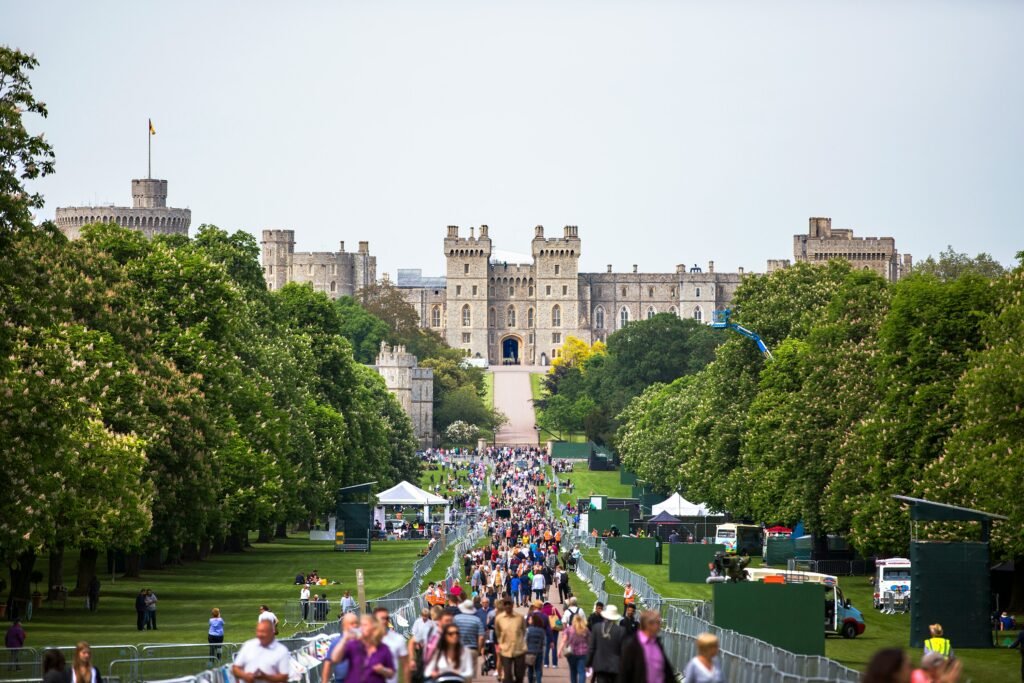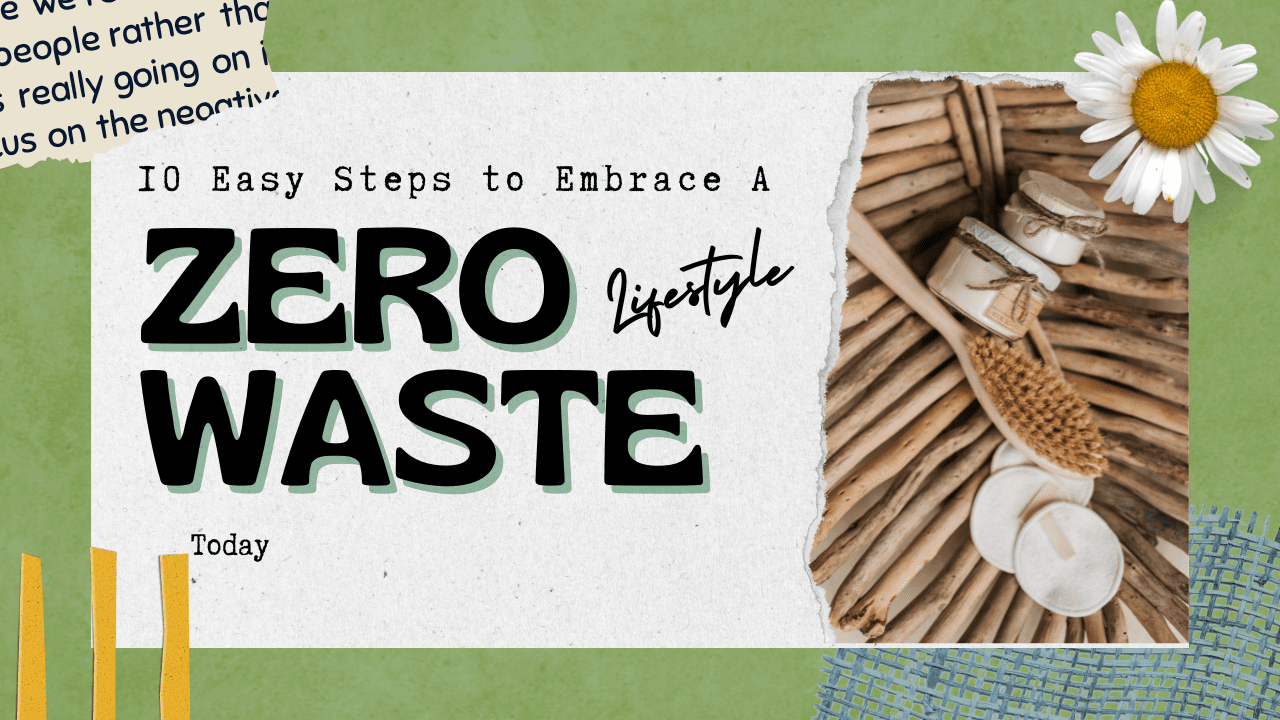Table of Contents
Toggle1. Introduction: The Crown’s Green Calling
Imagine a world leader who started warning about plastic pollution back in 1970, when most folks were still tossing their trash without a second thought. That’s King Charles III for you. For over five decades, long before “eco-friendly” became a buzzword, he’s been a tireless advocate for our planet. This dedication isn’t a recent development; it’s a deeply ingrained commitment that has shaped his public identity for half a century. His early warnings, often met with skepticism, demonstrate a foresight that lends significant weight to his current environmental endeavors.
Now, as monarch, King Charles Sustainable Travel Initiatives are taking center stage, showcasing how even a globally-traveling institution can pivot towards a greener future. The monarchy’s efforts extend beyond symbolic gestures, aiming for tangible reductions in environmental impact and fostering broader change. This report will explore the King’s deep-rooted commitment to the environment, the tangible steps the Royal Household is taking to reduce its footprint, and crucially, how the monarchy is actively shaping the landscape of eco-friendly tourism worldwide.
2. A Royal Legacy: King Charles’ Decades-Long Green Vision

King Charles III’s environmental advocacy is not a new interest but a lifelong dedication, providing a strong foundation for his current initiatives. As Prince of Wales, he began speaking out on environmental issues like plastic pollution and oil spills as early as 1970, a time when such concerns were far from mainstream. He even reflected in 2020 that he was “considered rather dotty, to say the least” for his early campaigning, highlighting how ahead of his time his views were. His consistent focus on these issues over decades underscores a genuine, deeply held belief, rather than a fleeting interest, which is vital for the long-term impact and public acceptance of his efforts. He also convened meetings with world leaders to discuss these pressing threats to the environment.
A significant development in his environmental work was the launch of the Sustainable Markets Initiative (SMI) in late 2019, while he was still Prince of Wales. The SMI’s global mission is to accelerate the transition to a sustainable future by mobilizing the private sector, aligning with critical international agreements such as the Paris Climate Agreement, the Convention on Biological Diversity, and the Sustainable Development Goals. This move from pure advocacy to actively engaging the private sector demonstrates a sophisticated understanding that large-scale environmental solutions require substantial financial investment and systemic change, extending beyond government policy or individual actions. The SMI aims to mobilize “trillions of dollars” and has garnered pledges of support from over 500 CEOs, focusing on shifting corporate strategies and reforming global financial systems. The Terra Carta, an associated mandate, provides a roadmap for businesses to move towards an ambitious and sustainable future, harnessing nature’s power combined with private sector innovation. It explicitly aims to put Nature, People, and Planet at the heart of global value creation.
Beyond global initiatives, King Charles has also been a pioneer in practical environmental management on his own estates. He famously converted his Highgrove estate into an organic haven in the 1980s, limiting antibiotics and planting trees and wildflowers. He also transformed the Duchy Farm into an organic operation as early as 1985, focusing on food production methods that avoid the detrimental impact of industrialized agriculture. This pioneering approach at Highgrove evolved into the successful Duchy Organic brand, which has significantly fueled interest in organic farming and encouraged broader conversations about sustainable alternatives to pesticides.
His personal choices further reinforce his commitment. He has long promoted a “make do and mend” philosophy, preferring to repair clothes and shoes rather than buying new, a stance that aligns with sustainable fashion principles. Perhaps most famously, his Aston Martin runs on bio-ethanol made from wine wastage and a cheese by-product, and he uses a fully electric Jaguar I-Pace for engagements in London. These personal applications of sustainable principles, even if sometimes seen as “eccentric” by the press, lend authenticity to his broader advocacy, making his message more relatable and impactful. His unique position and long-term advocacy have been instrumental in mainstreaming environmental discourse in the UK, fostering greater bipartisan acceptance for climate action, with some noting he is “more educated about these issues than almost any living politician”.
3. Greening the Royal Residences: Sustainability at Home

The Royal Household has undertaken extensive efforts to embed sustainability within its own operations, transforming its palaces and estates into models of environmental responsibility. This institutionalisation of sustainability goes beyond individual preferences, indicating a systemic, long-term commitment.
Energy Efficiency: The Royal Household actively works to reduce energy consumption for heating, lighting, and cooling across its buildings. A network of over 60 smart meters monitors energy use, allowing for precise identification and targeting of areas for improvement. A dedicated group of “Green Champions,” established in 2006-07, continually develops and implements projects aimed at reducing energy consumption and wider environmental impact. A computerised Building Management System centrally controls heating, cooling, and hot water, optimising efficiency.
A significant shift has occurred in energy sourcing. Around 90% of energy for office and domestic use now comes from renewable sources, with about half generated on-site. This includes solar panels installed at Clarence House, Highgrove, and Home Farm, as well as biomass boilers at Highgrove, Birkhall, and Llwynywermod, and ground-source and air-source heat pumps at Highgrove. Windsor Castle further contributes to this by generating 40% of its electricity from a hydroelectric power scheme on the River Thames at Romney Weir. Energy-efficient LED lighting is being trialed, reducing electricity use by up to 86% and producing less heat, which also benefits the preservation of the Royal Collection’s artworks. Even the historic gas lanterns at Buckingham Palace have been converted to electric, custom-fitted to preserve their appearance while improving efficiency. These measures have yielded tangible results, with the Royal Family’s household energy emissions falling by 22% between 2018 and 2019 due to the implementation of renewables. The Buckingham Palace Reservicing program, a £369 million undertaking, explicitly includes improving environmental sustainability as a core objective. This demonstrates how even historical properties can be modernized for eco-friendliness without compromising their heritage.
Waste Management: The Royal Household is committed to reducing waste and maximizing reuse and recycling of materials. This includes a partnership with Computer Aid International, through which old computer equipment is reused or recycled to support schools and community organizations in developing countries, diverting waste from landfills. Food waste is composted where possible or collected to be converted into fertilizer and generate renewable energy. Clarence House, for instance, has used glasses and ceramic mugs instead of disposable cups for over a decade and employs chilled water dispensers to eliminate the need for plastic bottles. At Balmoral, a substantial 50 tonnes of organic waste are transformed into compost annually. Comprehensive recycling of food waste, glass, metals, plastic, cardboard, and paper is standard practice across the estates.
Sustainable Land Use: The management of royal gardens and estates actively promotes biodiversity and ecological health. In the Buckingham Palace Gardens, large wood piles provide habitats for diverse flora and fauna, including beetles, spiders, and fungi. Tree stumps are left to rot naturally, creating environments for insects, and dead trees are retained to provide homes for birds like woodpeckers. Pesticide use is minimized, with methods like weed burning machines employed on paths to avoid chemical use. A “long grass policy” covers about 10% of the garden, allowing 320 different types of wildflowers to complete their yearly growth cycle before being cut, ensuring their reproduction. Beehives are maintained in undisturbed areas, promoting pollination and supporting local ecosystems.
On the private estates of Balmoral and Sandringham, conservation is a key management principle. Policies ensure sympathetic farming practices, with Balmoral woodlands certified by the Forest Stewardship Council for sustainable forestry and farming registered with the Soil Association, promoting organic food and farming. Sandringham produces organic vegetables and fruit, and its apples are even turned into juice with minimal preservatives. Over five thousand trees and several miles of hedges are planted each year, and ten wetland areas have been created on the Norfolk estate, further enhancing local ecosystems.
The following table provides a snapshot of the Royal Household’s sustainability journey, illustrating the tangible progress made in transforming operational practices:
| Category | Traditional Practices (e.g., Pre-King Charles’s intensified focus) | Current Practices (Post-King Charles’s intensified focus) | Impact on Sustainability |
|---|---|---|---|
| Energy Source | Reliance on fossil fuels for heating and electricity | 90% renewable energy for office/domestic use; 50% generated on-site (solar, biomass, heat pumps); hydroelectric power at Windsor Castle | Reduced greenhouse gas emissions; decreased reliance on National Grid |
| Waste Management | Traditional waste disposal, potential landfilling | Extensive recycling (food, glass, metals, plastic, cardboard, paper); composting of food waste; IT equipment reuse via Computer Aid International; no disposable cups at Clarence House | Significant waste diversion from landfill; resource recovery; support for developing communities |
| Land Use | More conventional landscaping, potential pesticide use | Minimal pesticide use (e.g., weed burning); long grass policies for wildflowers (320 types); beehives; organic farming (Duchy Farm, Highgrove); FSC-certified woodlands; tree/hedge planting; wetland creation | Enhanced biodiversity; healthier ecosystems; sustainable agricultural practices |
This table clearly demonstrates the tangible progress made within the Royal Household’s direct operations. It provides concrete examples of how their internal practices have evolved, reinforcing the “leading eco-friendly tourism” narrative by showing leadership at home first.
4. Navigating the World: King Charles Sustainable Travel Initiatives in Practice

While the Royal Household demonstrates a strong commitment to sustainability within its estates, royal travel presents a unique set of challenges due to the nature of official duties. Addressing this “elephant in the room,” the monarchy is actively working to mitigate its travel footprint.
The Royal Travel Footprint: A Candid Look: The Royal Family’s combined carbon footprint is significant, tallying up to 5,994 tonnes a year, which is considerably higher than the average Brit’s 10 tonnes. In 2019, the family’s carbon footprint from official travel nearly doubled, reaching 3,344 tonnes of CO2, largely attributable to foreign travel. King Charles (as Prince) and Camilla had the biggest travel footprint in 2019, with 22 trips contributing 432.3 tonnes of CO2. A major contributor to this is the use of private jets, which are said to emit up to 20 times more carbon dioxide per passenger mile than commercial airliners. It is acknowledged that the Royal Family has an “enormous responsibility to travel across the globe to attend events”.
On the Move: Specific Initiatives to Reduce Travel Impact: Despite the inherent challenges, the Royal Household is implementing concrete measures to reduce its travel-related emissions.
- Vehicle Conversions: In a notable step, King Charles ordered his two state Bentley vehicles to be converted to run on biofuel in July 2024, with the long-term goal of upgrading them to all-electric vehicles. This builds on his personal example, as his Aston Martin already runs on bio-ethanol made from wine wastage and a cheese by-product, and he uses a fully electric Jaguar I-Pace for London engagements. This progression from personal sustainable habits to institutional changes demonstrates a powerful ripple effect.
- Sustainable Aviation Fuel (SAF): Recognizing the impact of air travel, two of the Royal Family’s 15-year-old helicopters are being replaced with new models capable of running on 50% sustainable aviation fuel (SAF). To ensure consistent access, a temporary SAF tank was installed at RAF Odiham, with plans for a permanent one by 2025-2026. This investment in SAF-capable aircraft and infrastructure is a direct effort to lower aviation emissions.
- Strategic Travel Planning: The Royal Household’s Sovereign Grant Annual Report emphasizes that travel decisions are made considering multiple factors, including “safety, security, the need to minimize disruption for others, the effective use of time, environmental impact, and cost”. This indicates a formalized process where environmental considerations are integrated into logistical planning.
- Reduced Trips: The same report noted a reduction of approximately 400 trips for official engagements and seven fewer trips costing over £17,000 between the 2022-2023 and 2023-2024 financial years. This suggests a conscious effort to optimize travel frequency where possible.
- Dedicated Leadership: Further solidifying this commitment, a Head of Sustainability was hired in March 2024. This role is specifically tasked with accelerating the Royal Family’s net-zero ambitions and improving their overall environmental footprint, providing dedicated leadership for these ongoing efforts.
Advocating for Greener Journeys in Tourism: King Charles’s influence extends far beyond the Royal Household, actively shaping the broader landscape of sustainable tourism. He advocates for electric vehicles, hydrogen-powered transport, and improved public transit systems to reduce reliance on fossil fuels, encouraging both individuals and businesses to adopt cleaner transportation methods. He supports the development of Sustainable Aviation Fuel (SAF) derived from waste and renewable sources, recognizing its potential to significantly reduce carbon emissions from air travel. Furthermore, he endorses carbon offsetting programs that fund renewable energy projects and reforestation efforts, providing mechanisms to mitigate unavoidable emissions.
His advocacy also targets the hospitality sector. He encourages the industry to adopt sustainable practices such as energy-efficient operations, waste reduction, and local sourcing of food and materials. Through partnerships with conservation organizations, he plays a role in protecting biodiversity, supporting wildlife reserves, marine conservation, and rewilding programs to ensure that tourism does not harm fragile ecosystems. He champions “slow and mindful travel,” where visitors immerse themselves in local cultures and ecosystems with minimal environmental impact, promoting a more responsible and enriching travel experience. His influence has even spurred a “Green Revolution” in the UK, encouraging the adoption of renewable energy sources and a reduction in carbon emissions nationwide. Notably, he tasked the creation of the Sustainable Markets Initiative’s Hospitality & Tourism Task Force, which specifically focuses on developing new business models, reducing emissions, and investing in people to support sustainable hospitality. This direct engagement aims to transform the entire tourism industry.
Actionable Advice for Greener Travel: Inspired by the monarchy’s commitment, individuals can also make meaningful changes to their travel habits:
- Choose Eco-Certified Accommodations: Look for hotels and resorts that prioritize energy efficiency, waste reduction, and local sourcing, much like King Charles encourages the hospitality industry to do. Many platforms now highlight such certifications.
- Embrace Low-Carbon Transport: Consider trains, electric vehicles, or even cycling for your journeys where feasible. If flying is necessary, explore airlines committed to Sustainable Aviation Fuel (SAF) or those that offer transparent carbon offsetting programs.
- Practice “Slow Travel”: Instead of rushing through destinations, take your time. Immerse yourself in local culture, support local businesses, and minimize your environmental footprint by staying longer in one place and exploring deeply.
- Support Nature-Based Tourism Responsibly: When visiting national parks, wildlife reserves, or eco-sanctuaries, ensure your activities contribute to conservation efforts and respect local ecosystems. Choose operators with strong ethical and environmental policies.
- “Make Do and Mend” Your Travel Gear: Just as King Charles advocates for sustainable fashion, consider repairing or repurposing travel items like luggage, clothing, or electronics instead of buying new. This reduces waste and extends product lifespans.
For instance, when my friend Sarah planned her dream trip to Costa Rica, she initially just booked the cheapest flights and a standard resort. But after reading about how King Charles’ initiatives are pushing for greener travel, she looked into eco-lodges and local transport options. She ended up taking a scenic bus through the rainforest, supporting a family-run guesthouse that sourced its food locally, and said the slower pace made the experience infinitely richer, not to mention lighter on her conscience. It just goes to show, small shifts can lead to big impacts.
5. Beyond the Balcony: The Monarchy’s Global Influence
The impact of King Charles III’s environmental advocacy extends far beyond the confines of the Royal Household, demonstrating the unique “soft power” the monarchy wields in global discourse.
The Ripple Effect: The King’s long-standing advocacy has been instrumental in bringing climate change discussions into the mainstream and fostering greater bipartisan acceptance for climate action in the UK. Unlike politicians, whose roles are often partisan, the monarch’s more symbolic position allows him to champion causes like environmentalism without being perceived as “meddling” in the same way, even if he faced some criticism for being outspoken as Prince. This unique standing enables him to convene diverse groups – from Heads of State to CEOs and young environmentalists like Greta Thunberg and Karen Kimani – which has proven powerful in finding solutions and inspiring action globally. His influence has notably spurred a “Green Revolution” in the UK, encouraging the adoption of renewable energy and broader carbon emission reduction efforts.
Driving Industry Change: The King’s efforts are not merely about raising awareness; they are about driving tangible change across industries. The Sustainable Markets Initiative (SMI), which he founded, actively engages the private sector to accelerate the transition to a sustainable future. This strategic focus acknowledges that significant global environmental progress requires the innovation and resources of businesses. A prime example of this targeted influence is the SMI’s Hospitality & Tourism Task Force. Specifically tasked by King Charles III, this task force focuses on creating new business models, reducing emissions, and investing in people to support sustainable hospitality, directly aiming to make the tourism sector more eco-friendly. His consistent encouragement of sustainable hotels, low-carbon transport, and mindful travel practices directly impacts how the tourism industry evolves globally. This holistic approach to sustainability, encompassing food, fashion, and community development alongside travel, indicates a comprehensive understanding that sustainable travel is part of a larger, interconnected ecosystem of sustainable living and economic practices.
Acknowledging the Ongoing Journey: While significant strides have been made, the journey towards net-zero emissions and a truly sustainable future is continuous. The Royal Household openly acknowledges the need for further impact reduction. The appointment of a dedicated Head of Sustainability signifies a formalized commitment to accelerating net-zero ambitions, ensuring that these efforts are not just aspirational but are systematically integrated into the monarchy’s long-term operational strategy. This transparent approach, acknowledging challenges while demonstrating proactive steps, further reinforces the credibility of their leadership in this critical area.
6. Conclusion: Charting a Greener Course for All

King Charles III’s unwavering commitment to sustainability is a lifelong endeavor, deeply embedded in his personal philosophy and extending to the operational practices of the Royal Household. From his early warnings about plastic pollution in the 1970s to his current role as monarch, he has consistently championed environmental causes, demonstrating a remarkable foresight and dedication.
The monarchy is actively working to reduce its own environmental footprint, particularly in travel, through innovative solutions such as biofuel conversions for state vehicles and the adoption of Sustainable Aviation Fuel for helicopters. These efforts, coupled with comprehensive energy efficiency programs and sustainable land management across royal estates, highlight a concerted institutional drive towards a greener operational model.
Beyond their own operations, the King’s influence, particularly through the establishment of the Sustainable Markets Initiative and its dedicated Hospitality & Tourism Task Force, is driving significant shifts towards eco-friendly practices across global industries. His enduring advocacy has played a crucial role in mainstreaming environmental awareness, fostering bipartisan acceptance for climate action, and inspiring collective action for a greener future.
Inspired by the Crown’s green journey? You don’t need a palace to make a difference! Start small: choose a local, eco-friendly getaway this year, opt for public transport when you can, or simply pack a reusable water bottle. Every sustainable step helps chart a greener course for our shared planet.
FAQ
How has King Charles personally reduced his carbon footprint?
King Charles has long embraced eco-conscious habits, including powering his Aston Martin with bio-ethanol made from wine and cheese waste, using a fully electric Jaguar I-Pace for London engagements, and advocating for “make do and mend” in fashion to extend garment lifespans.
What is the Sustainable Markets Initiative (SMI)?
Launched by King Charles III, the SMI is a private sector organization aiming to accelerate the global transition to a sustainable future. It mobilizes private investment and aligns industries with climate goals, working towards systemic change across markets and supply chains.
Do the Royal Family still use private jets, and how are they addressing travel emissions?
Yes, the Royal Family still uses private jets for official duties, which significantly contribute to their carbon footprint. However, they are actively working to mitigate this by converting state vehicles to biofuel, replacing helicopters with models capable of using Sustainable Aviation Fuel (SAF, and integrating environmental impact as a key factor in travel planning
What is the Terra Carta?
The Terra Carta is a guiding mandate associated with the Sustainable Markets Initiative. It provides a roadmap for businesses to integrate nature, people, and the planet into global value creation, aiming for a sustainable future by 2030 by harnessing nature’s power and private sector innovation
How is King Charles encouraging eco-friendly tourism beyond the Royal Household?
He advocates for low-carbon transportation options, supports sustainable hotels and resorts, champions biodiversity protection in tourist areas, encourages “slow and mindful travel,” and established the SMI’s Hospitality & Tourism Task Force to drive industry-wide sustainable practices
Abhishek is the founder of SustainablyYour.com, where he shares practical tips and insights for living an eco-friendly life. Passionate about reducing waste and making sustainable choices accessible, he believes small changes can create big impact. When not writing, you’ll find him gardening—planting. Join the journey toward a greener future!.
Abhishek is a passionate advocate for sustainable living and green energy solutions. With years of experience in promoting eco-friendly practices, he aims to inspire individuals and businesses to adopt a more sustainable lifestyle. Abhishek’s expertise includes renewable energy, zero-waste living, and eco-conscious innovation
- Abhishekhttps://sustainablyyour.com/author/mark/
- Abhishekhttps://sustainablyyour.com/author/mark/
- Abhishekhttps://sustainablyyour.com/author/mark/June 15, 2025
- Abhishekhttps://sustainablyyour.com/author/mark/June 15, 2025










